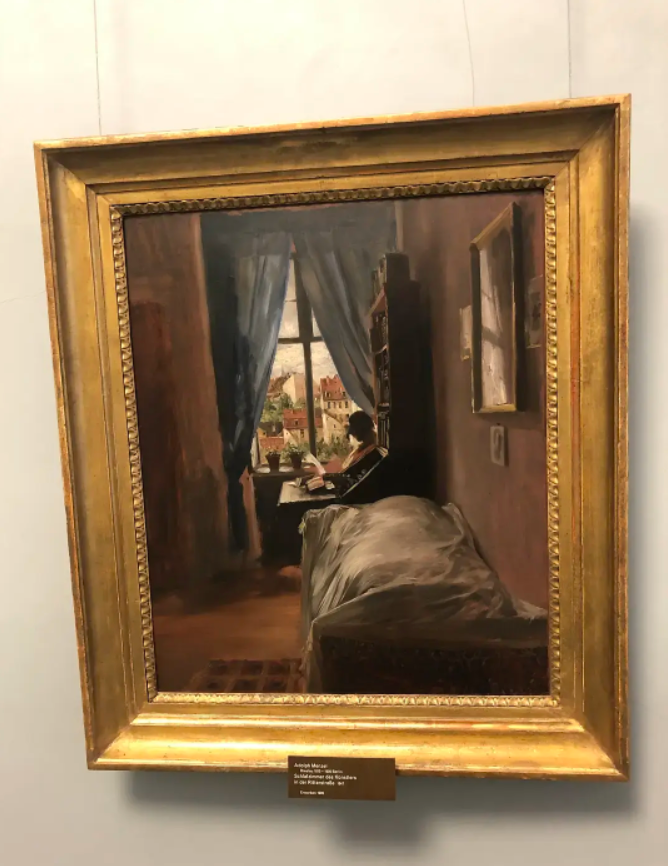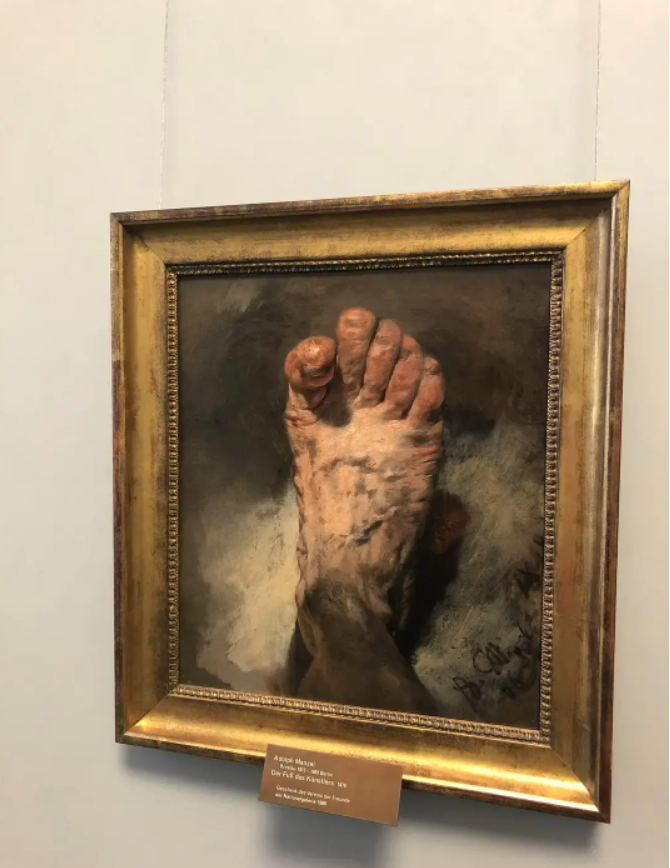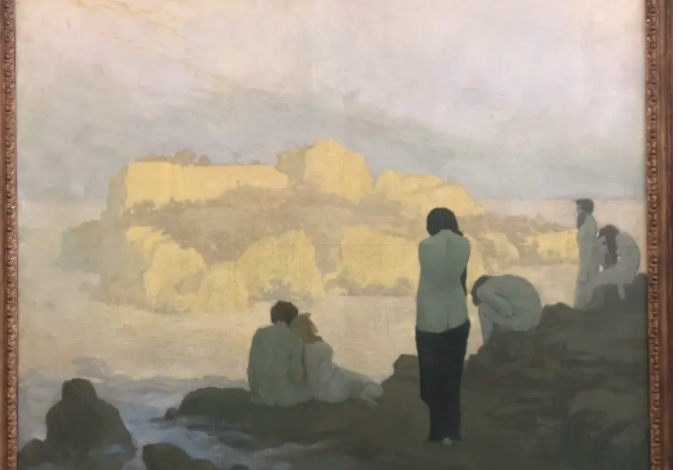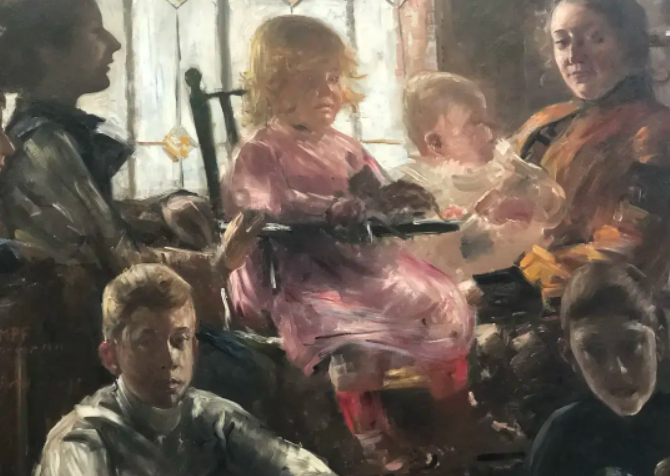
什么都敢说哦:)
Berlin Escape | Alte Nationalgalerie
2019 has been a turbulent day, but this statement is actually hypocritical and extravagant. After all, having money allows me to escape the world by appreciating works in art exhibitions around the world. In the second half of the year, I had an opportunity to escape to Berlin in a shattered American dream with values that I never agreed with, an unsuitable cooperation model, and a school I applied so hard to. The most touching thing should be spending a long time on Museum Island. Look at paintings and sculptures. Now I record a few paintings, recall the scene at that time, and leave a record for me in the future.

There are many masterpieces in the Old National Art Gallery, and the exhibits are sparse and orderly. The arcades of the buildings and the height of the buildings are also very comfortable. You can take a breather to appreciate each painting. This image is very impressive. It feels beautiful, rich in layers, delicate beauty, red, black and white. In fact, the painter depicted the scene where the mother died of cancer.
"The loose brushwork is indebted to the Impressionists, but the painting does not record the effects of light on a particular scene as observed by the artist. Instead, Beckmann reveals an individualized rendition of a group of mourners." But the painter himself rejected Impressionism or division of any faction.
Max Beckmann (1884-1950) was born into a middle-class family in Leipzig and was rebellious by nature. The experience of being a paramedic during World War I made him subconsciously switch from an academic demanding correct style to a distorted depiction of the body. He is famous for his self-portraits, comparable in quantity and intensity to Rembrandt, Picasso.

This life-size self-portrait I saw at the Art Institute of Chicago. At that time, I just took pictures of my favorite paintings by feeling. I didn't expect to see the same artist's works in Berlin later, and I was also attracted. This kind of feeling is very strange! According to information, this self-portrait was Beckmann's last self-portrait before leaving Berlin, and Hitler publicly expressed his hatred of modern art when he came to power the day after, and a decadent art exhibition was held within a few days, so it was time for Beckmann to leave.
He is very interested in mysticism and theosophy. As a true painter, he wants to find hidden spiritual connotations through his works. Theosophy (Theosophy) believes that all religions throughout history have evolved from long-lost "occult creeds". He gave death a certain place.
“What I want to show in my work is the idea hidden behind so-called reality. I am looking for the bridge, which leads from the Visible into the Invisible, as the famous cabbalist once said: If you want to comprehend the Invisible you have to advance as far as possible into the Visible.”
He was very popular in the Weimar Republic (the first attempt to implement a republic in German history, which was born after the November Revolution and ended when Hitler came to power), taught at the Frankfurt Academy of Arts, and won national awards. But Hitler's coming to power changed his fortunes because the dictator didn't like modern art. In 1933, the Nazi government called him "cultural Bolshevik", ousted him from his teaching post at the art academy, confiscated more than 500 of his paintings from the art gallery, and placed them in the infamous "Decadent Art Exhibition" ( Works of art exhibited in Munich in 1937 by non-German, Jewish or communist, or as decadent by the Nazi government)
For ten years, Beckmann has been living a self-sufficient, self-imposed life in Amsterdam. In 1944, the German army also wanted the sixty-year-old man with a heart attack to serve. His paintings in Amsterdam were even more emotionally concentrated than in Frankfurt at their peak.
In 1948, he moved to the United States. For the last three years of his life, he taught at his art college at the invitation of Perry T. Rathbone, curator of the St. Louis Art Museum. After stops in Denver and Chicago, he settled in a Manhattan apartment with his wife, Quappi, and in 1949 took a professorship at the Brooklyn Museum of Art School in New York.
A year later, during the winter in Central Park, Beckmann died of a heart attack, just a few kilometers from his Manhattan apartment. His wife recalled that Beckmann was on his way to the Met that day to see his work.
The Old National Gallery is connected by several exhibition halls, and a few steps to another circular exhibition hall. This is what immediately attracted me.

Wolkenstudie means studying the cloud. Adplph Menzel can express the tactile feeling of flowing clouds through brushstrokes, and modern photography technology can also capture the real side, but isn't art the artist's unique perspective to describe the things that people are accustomed to, thereby inspiring new emotional ideas? I also want to study cloud, hahaha.




Dancers perform physical performances in the art gallery that match the temperament of the paintings, and further experience the paintings from the flow of the aura between people and the world. Why not do it?


People visiting the art gallery can also be seen as part of a timely art.


—————————————————————————————————————————————
At that time, I certainly did not expect a global epidemic in three months. Those days in Berlin really had a rose filter, with a Berlin flavor, that filter had to have holes. If you leave again this year, what will it be like to go to Berlin?
Written on 2022.4.29
Like my work?
Don't forget to support or like, so I know you are with me..
Comment…